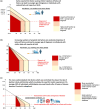Young-onset type 2 diabetes-Epidemiology, pathophysiology, and management
- PMID: 40411309
- PMCID: PMC12209521
- DOI: 10.1111/jdi.70081
Young-onset type 2 diabetes-Epidemiology, pathophysiology, and management
Abstract
The prevalence and incidence of young-onset type 2 diabetes is increasing globally, especially in low- and middle-income countries, and predominantly affects non-White ethnic and racial populations. Young-onset type 2 is heterogeneous in terms of the genetic and environmental contributions to its underlying pathophysiology, which poses challenges for glycemic management. Young at-risk individuals remain underrepresented in clinical trials, including diabetes prevention studies, and there is still an insufficient evidence base to inform practice for this age group. Improvements in diabetes care delivery have not reached young people who will progress to have disabling complications at an age when they are most productive. This review summarizes recent studies on the epidemiology of young-onset type 2 diabetes and its complications. We discuss the genetic and environmental risk factors that act in concert to promote glycemic dysregulation and early onset of type 2 diabetes. We provide perspectives on diabetes prevention and management, and propose strategies to address the unique medical and psychosocial issues associated with young-onset type 2 diabetes. The Precision Medicine to Redefine Insulin Secretion and Monogenic Diabetes Randomized Controlled Trial (PRISM-RCT) is the first large-scale clinical trial designed to evaluate the effect of a structured care model that integrates biogenetic markers with communication and information technology on attaining strict metabolic targets and improving clinical outcomes in individuals with young-onset type 2 diabetes. The results of this study will inform the scientific community about the impact of multifactorial intervention and precision care in young patients, for whom the legacy effect is particularly significant.
Keywords: Epidemiology; Management; Young‐onset type 2 diabetes.
© 2025 The Author(s). Journal of Diabetes Investigation published by Asian Association for the Study of Diabetes (AASD) and John Wiley & Sons Australia, Ltd.
Conflict of interest statement
The current work received no funding support. A.O.Y.L. has served as a member of the advisory panel for Amgen, AstraZeneca, Boehringer Ingelheim, and Sanofi and has received research support from Amgen, Asia Diabetes Foundation, Bayer, Biogen, Boehringer Ingelheim, Lee's Pharmaceutical, MSD, Novo Nordisk, Roche, Sanofi, Sugardown Ltd, and Takeda, outside the submitted work. J.C.N.C holds patents for using genetic markers to predict diabetes and its complications for personalized care and is a co‐founder of a start‐up biotech company partially supported by the Technology Start‐up Support Scheme for Universities (TSSSU) of the Hong Kong Government Innovation and Technology Commission to support precision care.
Approval of the research protocol: N/A.
Informed Consent: N/A.
Registry and the Registration No. of the study/trial: N/A.
Animal Studies: N/A.
Figures


References
-
- Misra S, Ke C, Srinivasan S, et al. Current insights and emerging trends in early‐onset type 2 diabetes. Lancet Diabetes Endocrinol 2023; 11: 768–782. - PubMed
-
- International Diabetes Federation . IDF Diabetes Atlas, 6th edn. Brussels: International Diabetes Federation, 2013.
Publication types
MeSH terms
LinkOut - more resources
Full Text Sources
Medical

